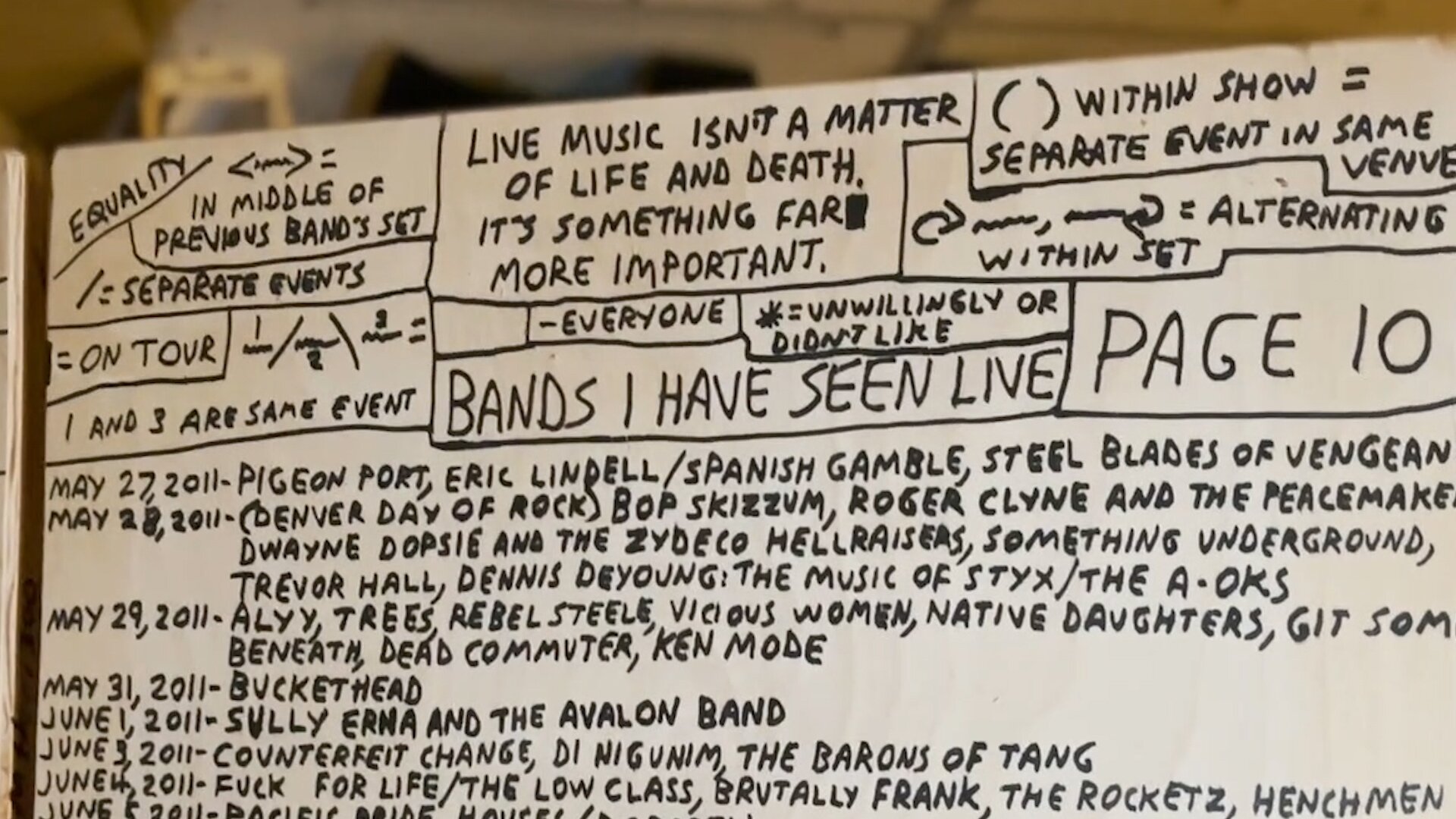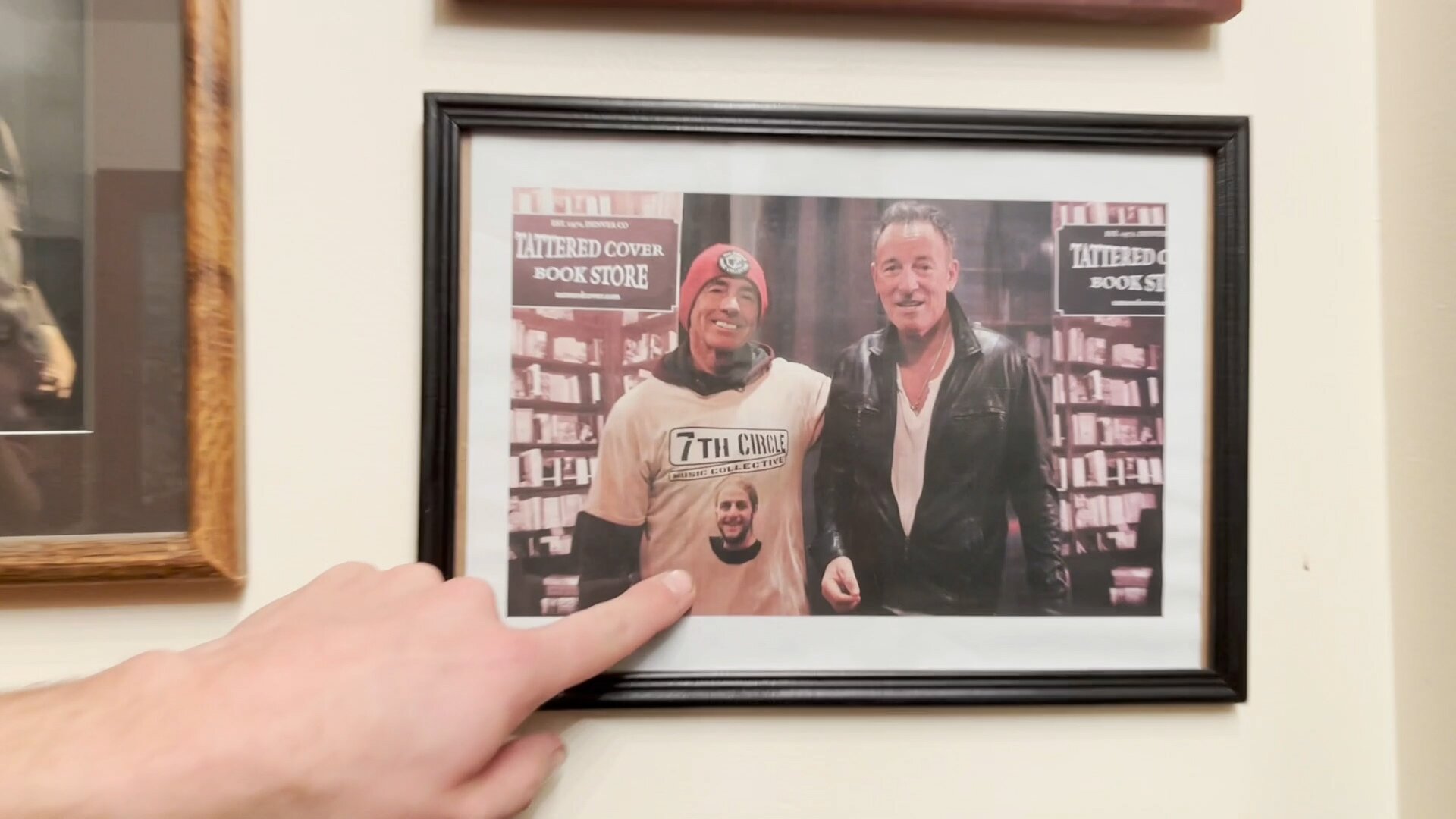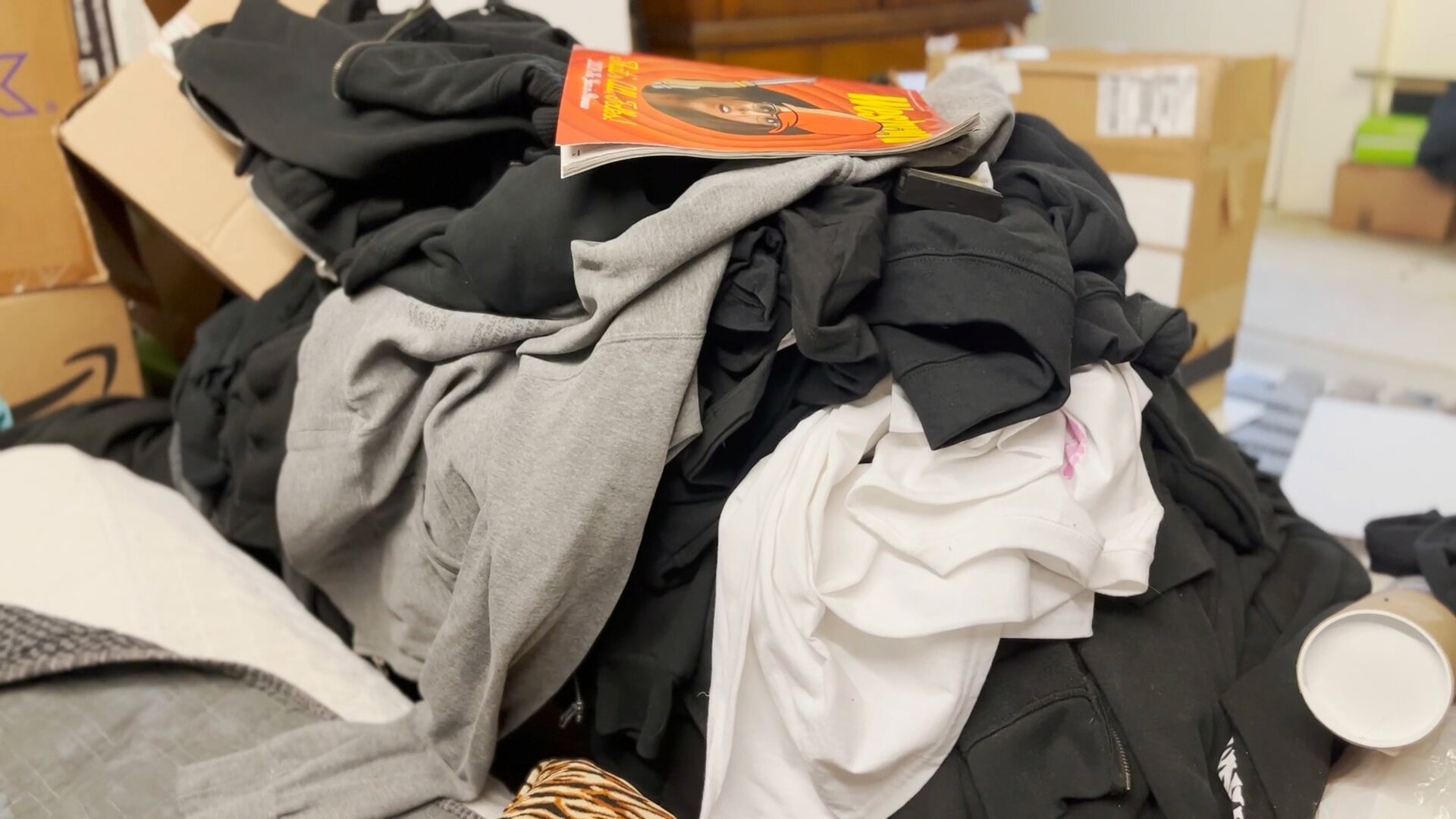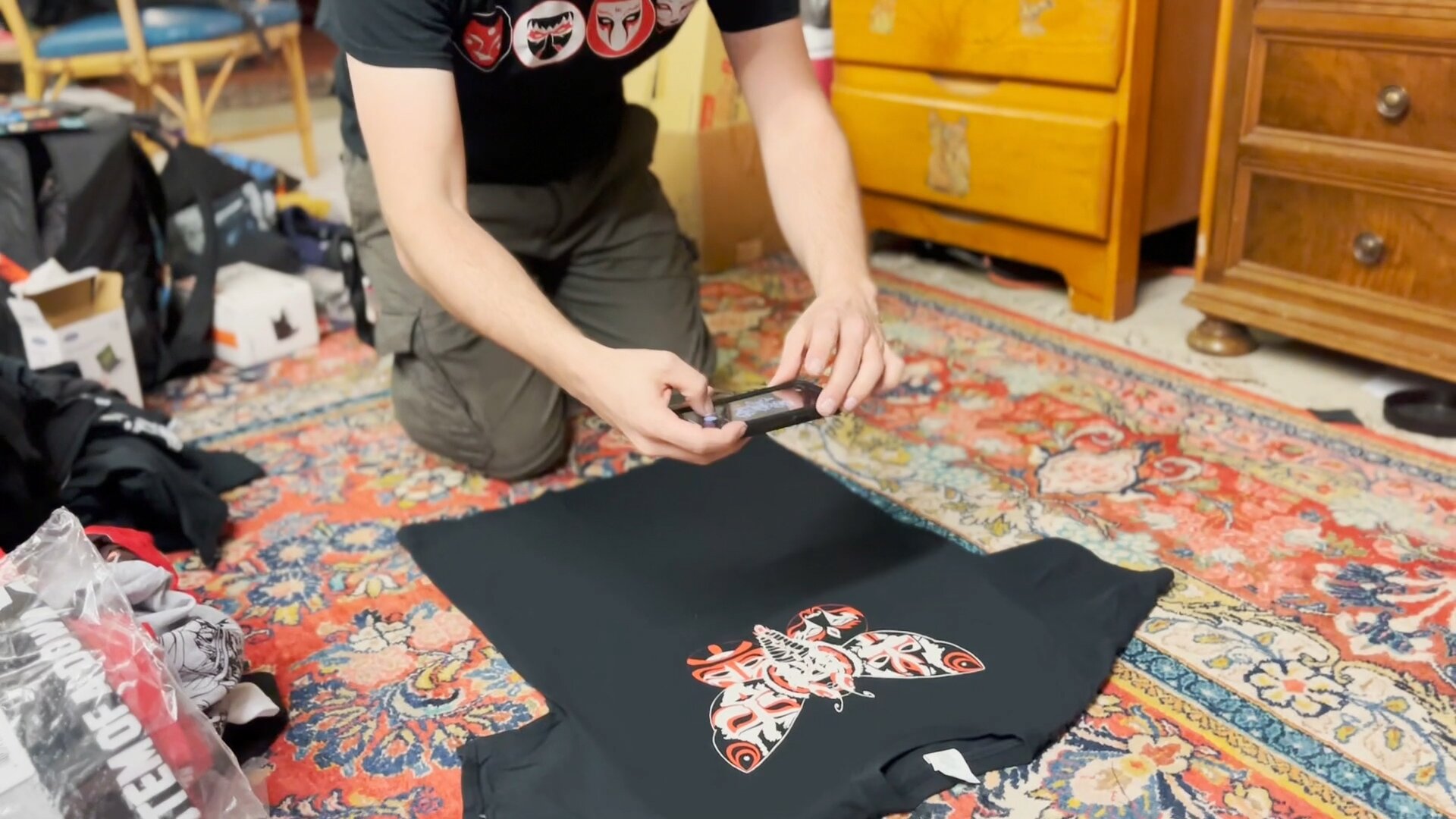Nearly 800 band t-shirts later, live-music lover has only made a dent in his collection

LITTLETON, Colo. — In 2003, Aaron Saye started writing a list of every band he’d ever seen in black permanent marker inside a bedroom cabinet door.
“I wrote them in the order I saw them, with the date,” explained Saye. “You never know if or when any of these bands or people that were in the bands are going to get bigger. I want to be able to know that I saw them then."
When room on the first cabinet ran out, he moved to the next — eventually filling over a dozen doors with small, block-letter text chronicling his early life as a music lover.

“I absolutely remember writing this down,” he said, pointing to the title of the list, “Bands I Have Seen,” along with the first scrawls listing concert dates.
Almost two decades later, “I’m still here, with all these shirts and records, and everything else from all my years in the music scene,” he said.
From his basement in Littleton, Colorado, a place he has lived since he was six years old, Saye pointed out memories contained in stairwell photos and weaves around massive stacks of records and other media.
He has a genetic predisposition toward organizing and collecting — his father, a photographer, painter and artist, also keeps meticulous records. Saye's endeavors to document the Denver music scene were encouraged by his parents.

Known locally as a longtime main organizer of Denver’s Seventh Circle DIY music collective, Saye began attending larger arena shows for his favorite bands in middle school in 2002. By 2004, he’d discovered the local scene — and there he made his home.
Since then, “I’ve gone to, hosted, booked and filmed thousands and thousands and thousands of shows," Saye said, pointing out that Seventh Circle Music Collective alone did 250 shows a year until March 13, 2020 when live music was shut down due to the pandemic.
Prior to that, he had booked and facilitated shows at Seventh Circle for seven and a half years. And at nearly every show, he obtained — bought, was given, or traded for — a shirt.
“You know, if you accidentally get a shirt at every show you go to, then you end up like this, for better or for worse!” he said.
“This is where a lot of the shirts are kept,” Saye continued, presenting a wall of floor-to-ceiling bookcases filled with mostly black band T-shirts.
“And these are the rest," Saye motions, surrounded on all sides by boxes, piles, stacks, shelves and dresser drawers, all filled with t-shirts.
The longer one is in the basement, the more one comes to realize that if one sees something and isn’t sure what’s in it — a filing cabinet, for example — the answer is shirts.


The Year of the Shirt was first imagined in November 2019.
“My friend Alex and I were out having pizza,” Saye said. “And he goes, ‘How many band shirts do you think you have? I don't think I've ever seen you wear the same shirt twice.’”
It sparked Saye to determine the answer. Throughout November and December of 2019, he pulled out every shirt he had, “and kind of threw 'em into one room, and just started organizing and alphabetizing.”
He made up rules as he went along. For example, hoodies don’t count. But if a t-shirt has been made into a hoodie, it does count.
“And if I have multiple shirts of one band, then I organize them chronologically in the order that I got them or the order they were released,” he said.
On January 1, 2020, “I started to wear one every day,” Saye said. “I thought, ‘We'll just see how long it takes, and that'll be how we figure out how many I have.’”
When Rocky Mountain PBS spoke to him in February 2022, Saye had only just reached the beginning of the letter D.
“This is the 772nd shirt,” he said during the interview. “This is a band called Daikaiju.”
To keep count, Saye posts a picture of himself on social media in that day’s shirt, accompanied by a story or memory of the band.
The public posts are supported by a searchable database Saye created of every band he’s ever seen. When he ran out of space on the cabinet doors, he transferred the bands and dates to a computer file. Now, it helps Saye remember the shows the shirts came from.
“For the most part, I can recall a lot of details about the specific things that may have happened at the show, funny stories, or anything like that,” Saye said. And if not, “All I have to do is hit ‘Command F’ and find when I saw that band.”
Saye points to boxes stacked floor to ceiling in a corner of the basement.
“Those are the 'S' boxes,” he said. “I just put 'em back there, 'cause I was like, ‘I don't need to get those for a few years.’ And now it's seeming like it's gonna be more like a decade! And I don't even know if I'll still live in this house at that point — but we'll see,” he laughed. “It definitely ended up being more of a commitment than I planned on.”

Thanks to The Year of the Shirt project, each day contains a reflection of the joy of the local music scene and touring acts, most of which Saye booked himself. “I consider so much of the most formative and best experiences in my life to be seeing live music,” Saye said.
“From a fan's perspective, there's not really a better way to support the bands that you love than to buy the merch that they have available. It’s just so much fun to collect,” he said. “It's a memory — a little physical piece from every show that you've been to.”
You can follow Saye's journey on his Instagram.
Kate Perdoni is a multimedia journalist with Rocky Mountain PBS and you can reach them at kateperdoni@rmpbs.org.
